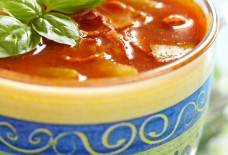Sponsored Post: Arab Identity and Culture of Slaves
When communicating with someone of Arab identity, a representative of the West must understand the peculiarities of Arab national thinking. Get acquainted with those cultural patterns of behavior that are inherent in Arabs in general. And to distinguish them from habits of conduct inherent in a particular person in particular. You can find out more about this in https://22bet.bi/slots/
We are talking about a unique perception of the world, the main features and views that have a decisive impact on intercultural communication.
Core values and orientations
For almost all Arabs, the following priorities are in the first place:
- human dignity, honor, and reputation;
- reasonable opinion of others under any circumstances;
- loyalty to the family, the priority of family values over personal interests.
- the significance of a person’s social status, which is characterized by belonging to a particular family, clan, and its connections
- all of this is above all. Personal qualities, achievements in comparison with previous factors fade into the background.
The Arab model of the relationship between the state, society, and the individual has a community as a starting point, not an individual personality. In this, he is the opposite of the Western model.
The main values and views that form an integral part of the Arab worldview:
- fatalism, belief in prescriptions, and predetermination of many events are inherent in Muslim Arabs.
The Identity Arabs
Many Arabs are generous, noble, humane, polite it is part of their identity. They are proud of their rich cultural heritage. They are well aware of their contributions to religion, philosophy, literature, history, medicine, architecture, mathematics, etc.
Arabs represent a special cultural group, which is commonly called the Arab nation.
Cultural History and its relation to Identity
The spread of Islam and the founding of the Arab Caliphate in the 7th century gave impetus to the development of Arab culture. The period of the Caliphate is known as the golden age of Islam or the Islamic renaissance. During this period, there was a merger with other peoples, which made it possible to introduce antiquity elements into the East’s culture.
Mathematics, astronomy, medicine, philosophy, history, architecture developed rapidly. Scientists have not limited themselves to studying the exact sciences. They also perfectly mastered the intricacies of poetry, knew several languages. It is worth mentioning that the language of science and religion was Arabic, and the language of poetry was Persian.
Arab culture gave tales to outstanding scholars and poets like al-Khwarizmi, al-Biruni, Nasreddin Tusi, Omar Khayyam, Ibn Sina, and Farabi.
Arab scholars who introduced trigonometry and decimal fractions measured the length of the equator and meridians, and Ibn Sina wrote The Canons of Medicine.
Progress has not passed by the fine arts. Studying the Quran required developing calligraphy skills. Traditional oriental patterns that have survived to this day are also widespread.
Rituals and etiquette
The man is always the first to introduce himself to the woman. The elders represent the younger by age or position. If you are teaching someone, then name the person you are describing. After the presentation, new acquaintances can shake hands. Shaking hands between men and women in Muslim countries is not recommended.
When they meet, Arabs like to talk about themselves in detail. At the same time, they talk about their parents, relatives, like to give them detailed descriptions, to praise. They will speak of their connections, about the relationships of their family members. All this information often seems entirely redundant for Westerners. He may attribute it to the talkativeness of the interlocutor or suspect him of bragging. This is just part of Arabic etiquette.
This post was paid for by a third-party and does not necessarily represent the views of Arab America.
For original content check out Arab America’s blog!



